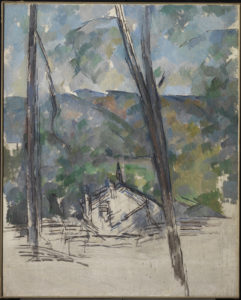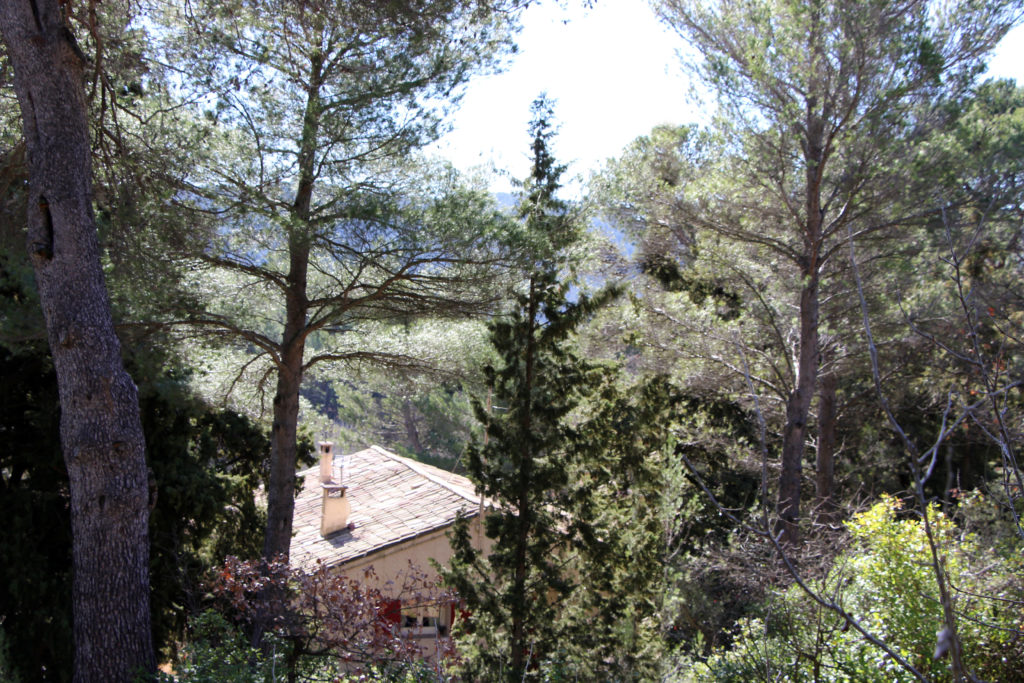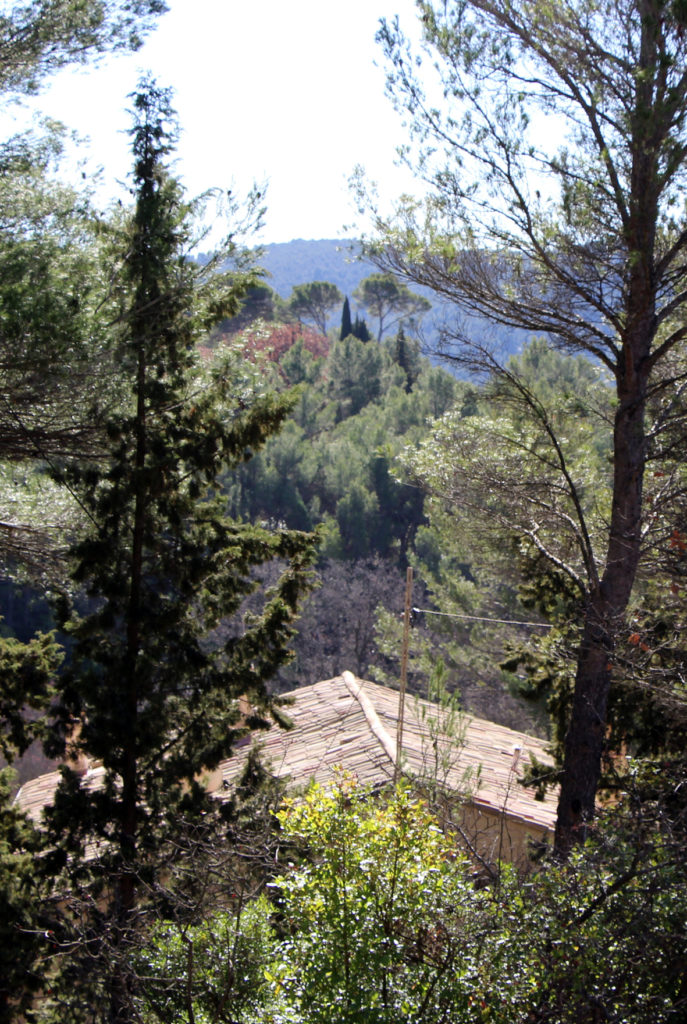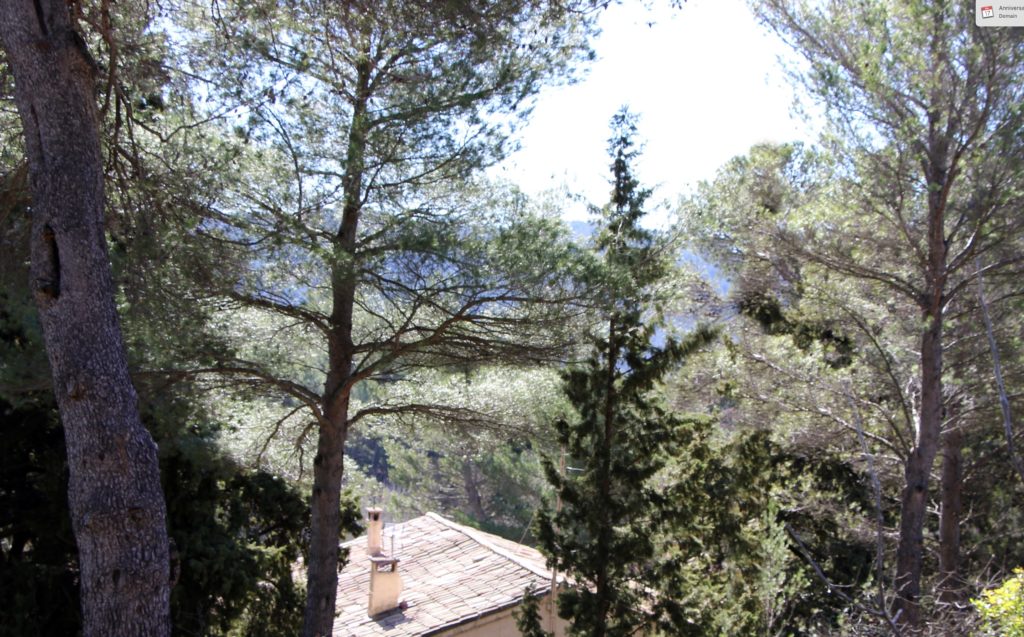R942 – Vue vers la route du Tholonet près du Chateau Noir, 1900-1904 (FWN347)
Pavel Machotka
(Cliquer sur les images pour les agrandir)
Quite close to the Château Noir grounds and apparently looking south across the Route du Tholonet – seen receding from us in La Montagne Sainte-Victoire au-dessus de la route du Tholonet (avec pin parasol) –, Cézanne painted and nearly finished his Vue vers la route du Tholonet près du Château Noir. What is puzzling about it is that it is left incomplete in a peculiar way, with the whole lower quarter left in outline form and disconnected from the rest, and that the outline itself is multiple; one edge of the roof, for example, is done in eight distinct lines. No single way of explaining this unique boundary between the finished and the unfinished makes sense by itself: it does not seem like an efficient way to choose the boundary that works best, nor like a hesitant response to a problematic foreground. Surely the building’s reddish roof could stand in any one of several positions (each of which, admittedly, would have altered the picture’s depth).
Whatever the motive may have been, the effect is powerful. The colors of the distant hills are delicately harmonious and the sky is connected to them by touch and by color. Above all, we can look at the painting as a process, as as a chain of attempted answers to questions about depth and proportion, about the right touches to use to respond to those already in place, about the core subject of the painting.
Source: Machotka, Cézanne: The eye and the Mind.
Photographies du site prises en février 2018, appartenant au fonds Léo Marchutz, communiquées par Antony Marschutz, qui écrit :
(Voici) 3 photographies prises en février dernier du motif du tableau de la collection Pearlman actuellement en dépôt pour un an au Musée Granet. Bien évidemment, plus de cent ans après, les choses ont changé : la maison assez peu, les trois cheminées sont bien visibles, par contre les frondaisons, vu les arbres qui ont disparu et ceux qui ont poussé entretemps, sont totalement différentes.
Il reste le contour des collines qui, lui, n’a pas changé, si ce n’est que les arbres occultent la vue telle que Cézanne l’a peinte.
Ce paysage a été réalisé à partir d’un emplacement à quelques dizaines de mètres du lieu où a été apposé la stèle: « D’ici Cézanne a peint le paysage de Sainte-Victoire », à l’entrée du parc de Châteaunoir.
Concernant cette peinture, Léo écrivit le 13 novembre 1958 à son ami Albert Châtelet : « A propos, Henry Pearlman vient d’acheter un tableau de Cézanne venant de la succession Vollard – il m’a envoyé une photo, c’est un paysage pas terminé – magnifique – de l’année 1904 et j’ai trouvé l’endroit : c’est peint de l’entrée de Châteaunoir. C’est passionnant d’étudier ça sur place – ça m’a fait un coup – quelle sûreté de mise en place en partant de l’indéterminé, qu’il laisse percer partout. »





